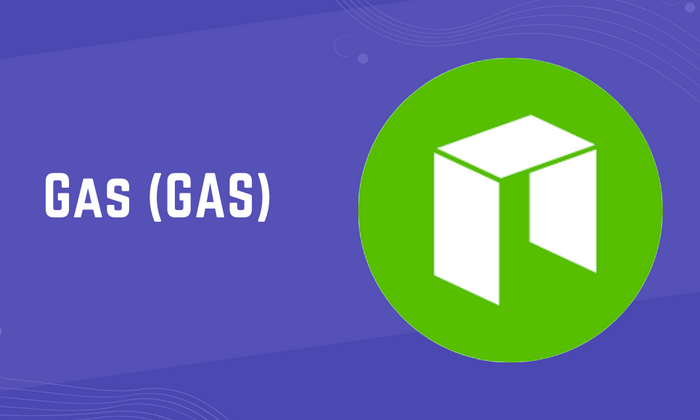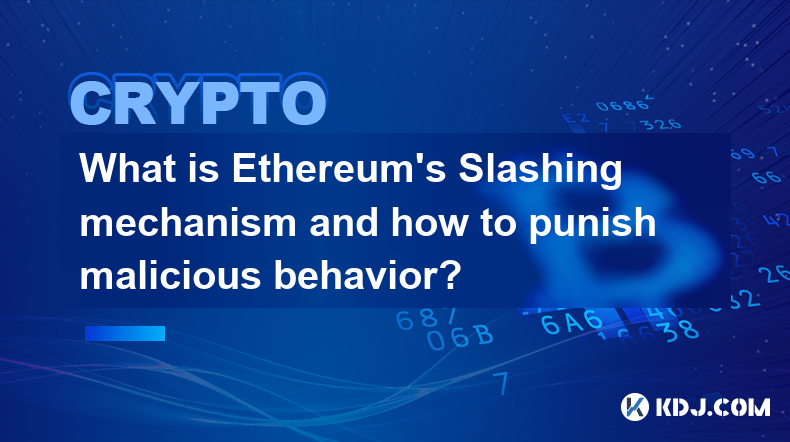-
 Bitcoin
Bitcoin $83,581.5964
-1.31% -
 Ethereum
Ethereum $1,827.0061
-2.95% -
 Tether USDt
Tether USDt $0.9998
0.00% -
 XRP
XRP $2.0572
-2.12% -
 BNB
BNB $600.6352
-0.50% -
 Solana
Solana $120.4741
-3.43% -
 USDC
USDC $0.9998
0.00% -
 Dogecoin
Dogecoin $0.1664
-3.04% -
 Cardano
Cardano $0.6531
-2.78% -
 TRON
TRON $0.2370
-0.47% -
 Toncoin
Toncoin $3.7850
-5.03% -
 Chainlink
Chainlink $13.2476
-3.86% -
 UNUS SED LEO
UNUS SED LEO $9.3960
-0.18% -
 Stellar
Stellar $0.2662
-1.01% -
 Sui
Sui $2.4099
1.77% -
 Avalanche
Avalanche $18.7876
-2.88% -
 Shiba Inu
Shiba Inu $0.0...01237
-0.55% -
 Hedera
Hedera $0.1663
-0.15% -
 Polkadot
Polkadot $4.0579
-1.23% -
 Litecoin
Litecoin $83.8022
0.76% -
 MANTRA
MANTRA $6.3807
2.55% -
 Bitcoin Cash
Bitcoin Cash $304.1581
-0.61% -
 Bitget Token
Bitget Token $4.5514
-1.22% -
 Dai
Dai $1.0000
0.01% -
 Ethena USDe
Ethena USDe $0.9999
0.00% -
 Pi
Pi $0.6648
-3.97% -
 Hyperliquid
Hyperliquid $12.4497
-5.55% -
 Monero
Monero $214.6449
-2.17% -
 Uniswap
Uniswap $6.0261
-2.31% -
 Aptos
Aptos $5.2625
-0.45%
Does Gas coin have investment value?
Despite inherent risks, the strategic allocation of investments across multiple gas coins, coupled with prudent risk management techniques, can maximize potential returns in the dynamic realm of blockchain technology.
Nov 17, 2024 at 05:20 am

Does Gas Coin Have Investment Value? A Comprehensive Examination
Within the dynamic and rapidly evolving realm of blockchain technology, the role of gas coins has emerged as a pivotal element, fueling the operations of decentralized financial networks and facilitating the execution of smart contracts. However, amidst the proliferation of numerous gas coins, determining their investment potential poses a significant challenge for both novice and seasoned investors alike. Accordingly, this comprehensive analysis delves into the intricacies of gas coins, evaluating their underlying characteristics and exploring the factors that influence their value. By shedding light on the potential benefits and risks associated with investing in gas coins, this article aims to empower investors with the knowledge necessary to make informed decisions.
1. Understanding Gas Coins: The Foundation of Blockchain Transactions
To fully comprehend the investment potential of gas coins, it is imperative to establish a firm grasp of their fundamental nature and function within the blockchain ecosystem. Gas coins, often referred to as transaction fees, serve as the lifeblood of decentralized networks, enabling users to execute smart contracts and initiate transactions. Without these essential payments, blockchain operations would grind to a halt, hindering the seamless functioning of the entire ecosystem. The scarcity of gas coins further contributes to their value, as their finite supply ensures that their availability remains constrained. Notably, each blockchain platform may possess its own unique gas coin, tailored to the specific requirements of its respective network.
2. Examining Value Drivers: A Multifaceted Perspective
Just as a multifaceted diamond exhibits varying facets that contribute to its overall worth, gas coins possess an array of intrinsic attributes that shape their investment value. Firstly, the level of adoption and usage of the underlying blockchain network plays a pivotal role. The more widespread the adoption of a blockchain, the greater the demand for its associated gas coin, thereby driving up its price. Additionally, the speed, efficiency, and security offered by the blockchain network significantly influence the value of its gas coin. Networks that prioritize transaction speed, boast low transaction costs, and maintain robust security measures tend to attract a larger user base, subsequently increasing the demand for their gas coins.
3. Assessing Investment Risks: Navigating Uncertainties
While gas coins present alluring investment opportunities, it is crucial to acknowledge the inherent risks associated with such ventures. Similar to any investment endeavor, gas coins are susceptible to price fluctuations and market volatility, potentially leading to significant losses. Moreover, the regulatory landscape surrounding cryptocurrencies remains fluid and evolving, with the potential for sudden shifts in policy and regulation that may adversely affect the value of gas coins. These uncertainties underscore the importance of thorough research and a comprehensive understanding of the risks involved before embarking on any investment decisions.
4. Evaluating Investment Strategies: Maximizing Potential Returns
For investors seeking to harness the potential returns offered by gas coins, a judicious investment strategy holds paramount importance. The timing of investments, for instance, can profoundly impact returns. Buying gas coins during periods of low market prices and holding them for the long term has historically yielded substantial gains for investors. Furthermore, diversifying investments across multiple gas coins can mitigate risks and increase the likelihood of generating favorable returns. A well-diversified portfolio can serve as a buffer against unexpected downturns in the value of individual gas coins.
5. Monitoring Market Trends: Staying Ahead of the Curve
In the ever-changing crypto market, staying abreast of emerging trends is essential for investors. Monitoring the latest developments in the blockchain industry, such as the adoption of new technologies and regulatory shifts, can provide valuable insights into the future direction of gas coin prices. Additionally, tracking the performance of various gas coins and comparing their market share can offer valuable information for making informed investment decisions. By keeping a finger on the pulse of the market, investors can position themselves to capitalize on emerging opportunities.
6. Incorporating Risk Management Techniques: Protecting Investments
The volatile nature of gas coin investments necessitates the implementation of robust risk management strategies to safeguard investments. Establishing clear investment goals and risk tolerance levels is fundamental. Setting stop-loss orders can help limit potential losses by automatically selling gas coins when their prices reach a predetermined threshold. Additionally, managing leverage with prudence is essential to avoid excessive risk and protect against potential losses. A disciplined approach to risk management can enhance the longevity of investments and increase the likelihood of achieving desired returns.
Disclaimer:info@kdj.com
The information provided is not trading advice. kdj.com does not assume any responsibility for any investments made based on the information provided in this article. Cryptocurrencies are highly volatile and it is highly recommended that you invest with caution after thorough research!
If you believe that the content used on this website infringes your copyright, please contact us immediately (info@kdj.com) and we will delete it promptly.
- RUVI AI Revolutionizes AI Accessibility with Blockchain Power
- 2025-04-03 11:15:12
- Fidelity Investments Introduces an IRA That Permits Investors to Buy Bitcoin, Ether, and Litecoin
- 2025-04-03 11:15:12
- Whale Alert Detects a Large Bitcoin Transfer Involving 1050 BTC from Binance to an Unknown Wallet
- 2025-04-03 11:10:12
- Democratic Lawmakers Ask US Securities Regulator to Preserve Records of President Trump's Crypto Venture
- 2025-04-03 11:10:12
- Curve Finance Notches Record-Breaking Trading Volumes of Nearly $35 Billion in the First Quarter of 2025
- 2025-04-03 11:05:13
- Coinlist restarts US operations after five-year hiatus
- 2025-04-03 11:05:13
Related knowledge

What is Ethereum’s Slashing mechanism and how to punish malicious behavior?
Feb 20,2025 at 03:08am
Key PointsOverview of slashingDifferent types of slashing in EthereumIncentives and consequences of slashingIdentifying and reporting slashed validatorsOngoing discussions and potential improvementsEthereum's Slashing Mechanism: Punishing Malicious BehaviorEthereum's slashing mechanism is an essential tool for ensuring network security and punishing mal...

What is the verifier node of Ethereum and how to become a verifier?
Feb 19,2025 at 06:00pm
The Verifier Node of Ethereum: A Comprehensive GuideKey Points:What is a Verifier Node?How to Become a Verifier NodeResponsibilities and Rewards of a Verifier NodeMinimum Requirements for Becoming a Verifier NodePotential Difficulties in Running a Verifier Node1. What is a Verifier Node?A Verifier Node is an independent entity on the Ethereum network th...

What is Ethereum’s staking, and how to participate and earn money?
Feb 19,2025 at 04:37pm
Key Points:Understanding Ethereum's Staking MechanismSteps to Participate in StakingBenefits and Rewards of StakingSecurity and Risk ConsiderationsTechnical Requirements and Hardware OptionsPotential Challenges and Troubleshooting TipsFAQs on Ethereum StakingWhat is Ethereum's Staking?Proof-of-Stake (PoS) is a consensus mechanism used in blockchain netw...

What is Ethereum’s DAO (Decentralized Autonomous Organization) and how does it work?
Feb 20,2025 at 03:12am
Key PointsDefinition and Structure of a DAOGovernance and Decision-Making in DAOsBenefits and Use Cases of DAOsChallenges and Limitations of DAOsWhat is Ethereum's DAO (Decentralized Autonomous Organization) and How Does It Work?Definition and Structure of a DAOA Decentralized Autonomous Organization (DAO) is an innovative governance and management fram...

What is Ethereum's multi-signature wallet and how to improve security?
Feb 20,2025 at 02:18pm
Key Points:Understanding the Concept of a Multi-Signature WalletBenefits and Drawbacks of Multisig WalletsRequirements for Setting Up a Multisig WalletStep-by-Step Guide to Generating a Multisig WalletImplementing Strategies for Enhanced Security1. Understanding the Concept of a Multi-Signature WalletA multi-signature (multisig) wallet in the Ethereum e...

What is Ethereum's oracle and how to provide data for smart contracts?
Feb 21,2025 at 01:30am
Key Points:Understanding the concept of oracles in EthereumExploring different types of oraclesDetailed guide on how to provide data for smart contractsAddressing potential challenges and considerationsWhat is Ethereum's Oracle?Oracles are crucial components in the Ethereum ecosystem, enabling smart contracts to access real-world data and off-chain even...

What is Ethereum’s Slashing mechanism and how to punish malicious behavior?
Feb 20,2025 at 03:08am
Key PointsOverview of slashingDifferent types of slashing in EthereumIncentives and consequences of slashingIdentifying and reporting slashed validatorsOngoing discussions and potential improvementsEthereum's Slashing Mechanism: Punishing Malicious BehaviorEthereum's slashing mechanism is an essential tool for ensuring network security and punishing mal...

What is the verifier node of Ethereum and how to become a verifier?
Feb 19,2025 at 06:00pm
The Verifier Node of Ethereum: A Comprehensive GuideKey Points:What is a Verifier Node?How to Become a Verifier NodeResponsibilities and Rewards of a Verifier NodeMinimum Requirements for Becoming a Verifier NodePotential Difficulties in Running a Verifier Node1. What is a Verifier Node?A Verifier Node is an independent entity on the Ethereum network th...

What is Ethereum’s staking, and how to participate and earn money?
Feb 19,2025 at 04:37pm
Key Points:Understanding Ethereum's Staking MechanismSteps to Participate in StakingBenefits and Rewards of StakingSecurity and Risk ConsiderationsTechnical Requirements and Hardware OptionsPotential Challenges and Troubleshooting TipsFAQs on Ethereum StakingWhat is Ethereum's Staking?Proof-of-Stake (PoS) is a consensus mechanism used in blockchain netw...

What is Ethereum’s DAO (Decentralized Autonomous Organization) and how does it work?
Feb 20,2025 at 03:12am
Key PointsDefinition and Structure of a DAOGovernance and Decision-Making in DAOsBenefits and Use Cases of DAOsChallenges and Limitations of DAOsWhat is Ethereum's DAO (Decentralized Autonomous Organization) and How Does It Work?Definition and Structure of a DAOA Decentralized Autonomous Organization (DAO) is an innovative governance and management fram...

What is Ethereum's multi-signature wallet and how to improve security?
Feb 20,2025 at 02:18pm
Key Points:Understanding the Concept of a Multi-Signature WalletBenefits and Drawbacks of Multisig WalletsRequirements for Setting Up a Multisig WalletStep-by-Step Guide to Generating a Multisig WalletImplementing Strategies for Enhanced Security1. Understanding the Concept of a Multi-Signature WalletA multi-signature (multisig) wallet in the Ethereum e...

What is Ethereum's oracle and how to provide data for smart contracts?
Feb 21,2025 at 01:30am
Key Points:Understanding the concept of oracles in EthereumExploring different types of oraclesDetailed guide on how to provide data for smart contractsAddressing potential challenges and considerationsWhat is Ethereum's Oracle?Oracles are crucial components in the Ethereum ecosystem, enabling smart contracts to access real-world data and off-chain even...
See all articles
























































































